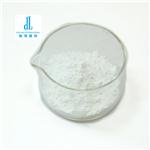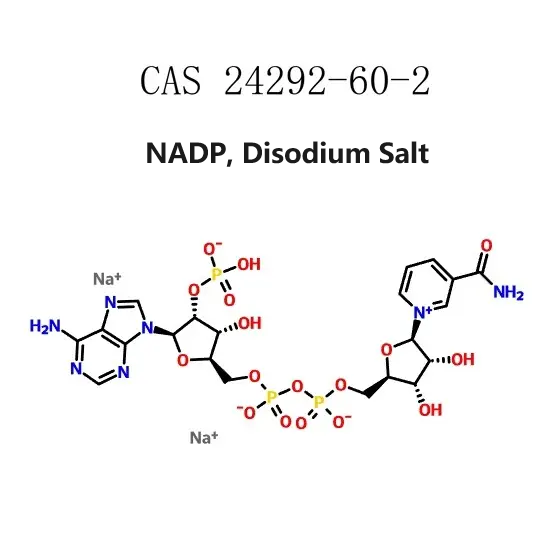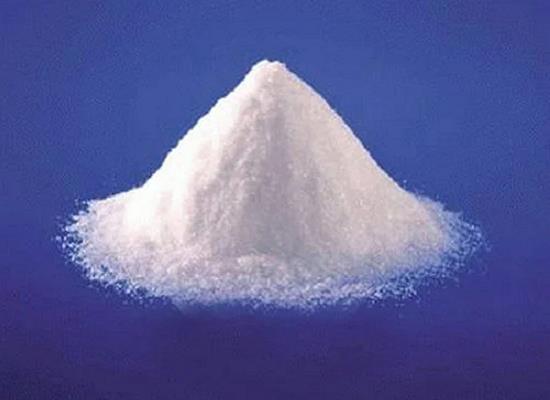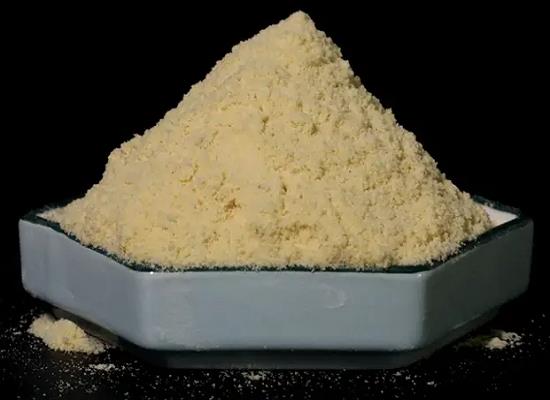NADP, Disodium Salt: Overview, Biotransformation and Clinical Applications
General Description
NADP, disodium salt, a vital coenzyme in cellular metabolism, serves as a crucial redox cofactor facilitating electron transfer and energy production. Its involvement in enzymatic reactions, particularly redox processes, underscores its significance in biochemical pathways. With potential applications in addressing oxidative stress-related conditions, such as aging and neurodegenerative diseases, NADP, disodium salt demonstrates promise in therapeutic interventions. By supporting ATP production and cellular functions, NADP, disodium salt emerges as a valuable tool in biomedical research and clinical practice. Further exploration through research and trials is essential to fully realize the extent of its benefits in healthcare.

Figure 1. NADP, Disodium Salt
Overview
NADP, disodium salt, also known as the disodium salt form of NADP, is a vital compound in biological processes. NADP, or nicotinamide adenine dinucleotide phosphate, acts as a crucial redox cofactor in a variety of metabolic reactions. It plays a pivotal role in electron transfer within cellular metabolism, being oxidized to form NADP+ and reduced to produce NADPH. NADPH serves as the primary electron donor in cellular biosynthesis and detoxification processes, while also playing a critical role in the cellular oxidative defense system. The disodium salt form of NADP offers improved solubility and stability, making it well-suited for research and industrial applications. Overall, NADP, disodium salt is indispensable for understanding and manipulating cellular redox processes, rendering it a valuable tool in biochemical and pharmaceutical research. Its significance lies in its ability to facilitate a deeper comprehension of cellular functions and to aid in the development of various biomedical applications. 1
Biotransformation
NADP, disodium salt, also known as nicotinamide adenine dinucleotide phosphate disodium salt, plays a crucial role in biological redox reactions. In living organisms, NADP, disodium salt primarily functions as a coenzyme involved in anabolic processes, particularly in biosynthetic pathways such as lipid and nucleic acid synthesis. The biological conversion of NADP, disodium salt occurs through a series of enzymatic reactions where it acts as an electron carrier, shuttling electrons between molecules to drive metabolic processes. Specifically, NADP, disodium salt can be reduced to NADPH (the reduced form) by accepting electrons and hydrogen ions from other molecules, such as glucose during glycolysis or fatty acids during fatty acid synthesis. NADPH, the reduced form of NADP, disodium salt, is essential for providing reducing power in cellular processes like photosynthesis, antioxidant defense, and the production of biomolecules. Overall, the biological conversion of NADP, disodium salt is vital for maintaining cellular redox balance and supporting various metabolic pathways essential for life. 2
Clinical applications
NADP, disodium salt is a crucial coenzyme found in all living cells. It plays a vital role in various biological processes, primarily in energy metabolism and cellular respiration. In clinical applications, NADP, disodium salt is often used as a cofactor in enzymatic reactions, particularly those involving redox reactions. Its presence is essential for the conversion of one molecule to another by transferring electrons, which is critical for many biochemical pathways. Additionally, NADP, disodium salt is involved in the production of ATP, the primary energy currency of cells, through processes like the citric acid cycle and oxidative phosphorylation. Furthermore, NADP, disodium salt has shown promise in medical interventions for conditions related to oxidative stress and cellular damage. Research suggests that supplementing with NADP, disodium salt may help mitigate oxidative damage caused by free radicals, potentially benefiting conditions such as aging, neurodegenerative diseases, and cardiovascular disorders. Overall, the clinical applications of NADP, disodium salt highlight its importance in cellular function and its potential therapeutic value in addressing various health issues related to energy metabolism and oxidative stress. Further research and clinical trials are warranted to explore its full range of benefits and applications in the field of medicine. 3
Reference
1. Zhao FL, Zhang C, Zhang C, Tang Y, Ye BC. A genetically encoded biosensor for in vitro and in vivo detection of NADP(.). Biosens Bioelectron. 2016;77:901-906.
2. Penning TM. The aldo-keto reductases (AKRs): Overview. Chem Biol Interact. 2015;234:236-246.
3. Chini CCS, Zeidler JD, Kashyap S, Warner G, Chini EN. Evolving concepts in NAD+ metabolism. Cell Metab. 2021;33(6):1076-1087.
);You may like
Related articles And Qustion
See also
Lastest Price from NADP, Disodium Salt manufacturers

US $10.00/kg2024-03-08
- CAS:
- 24292-60-2
- Min. Order:
- 1kg
- Purity:
- 99%
- Supply Ability:
- 1000kg

US $100.00/kg2024-02-27
- CAS:
- 24292-60-2
- Min. Order:
- 1kg
- Purity:
- 0.99
- Supply Ability:
- 100 tons





